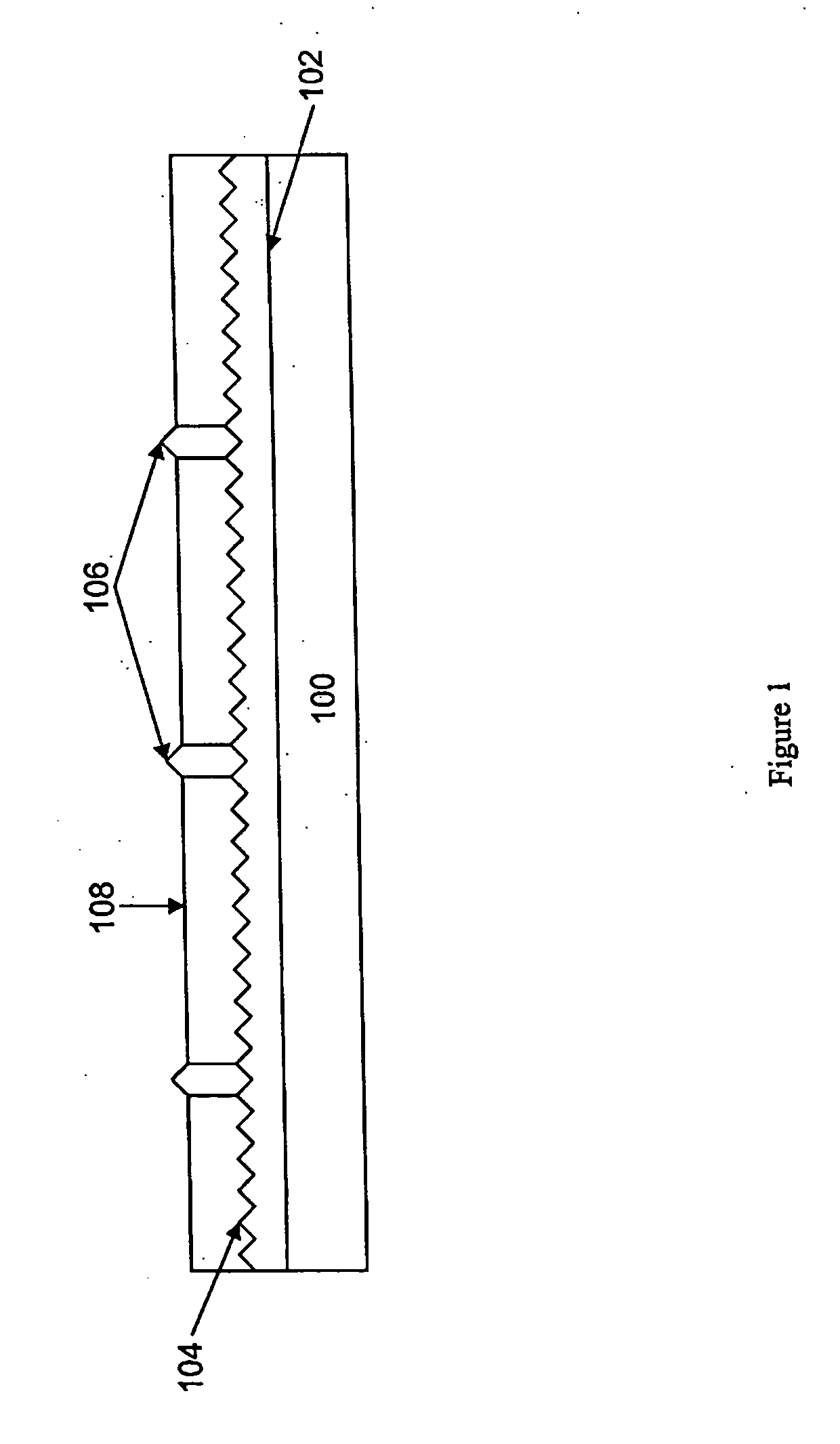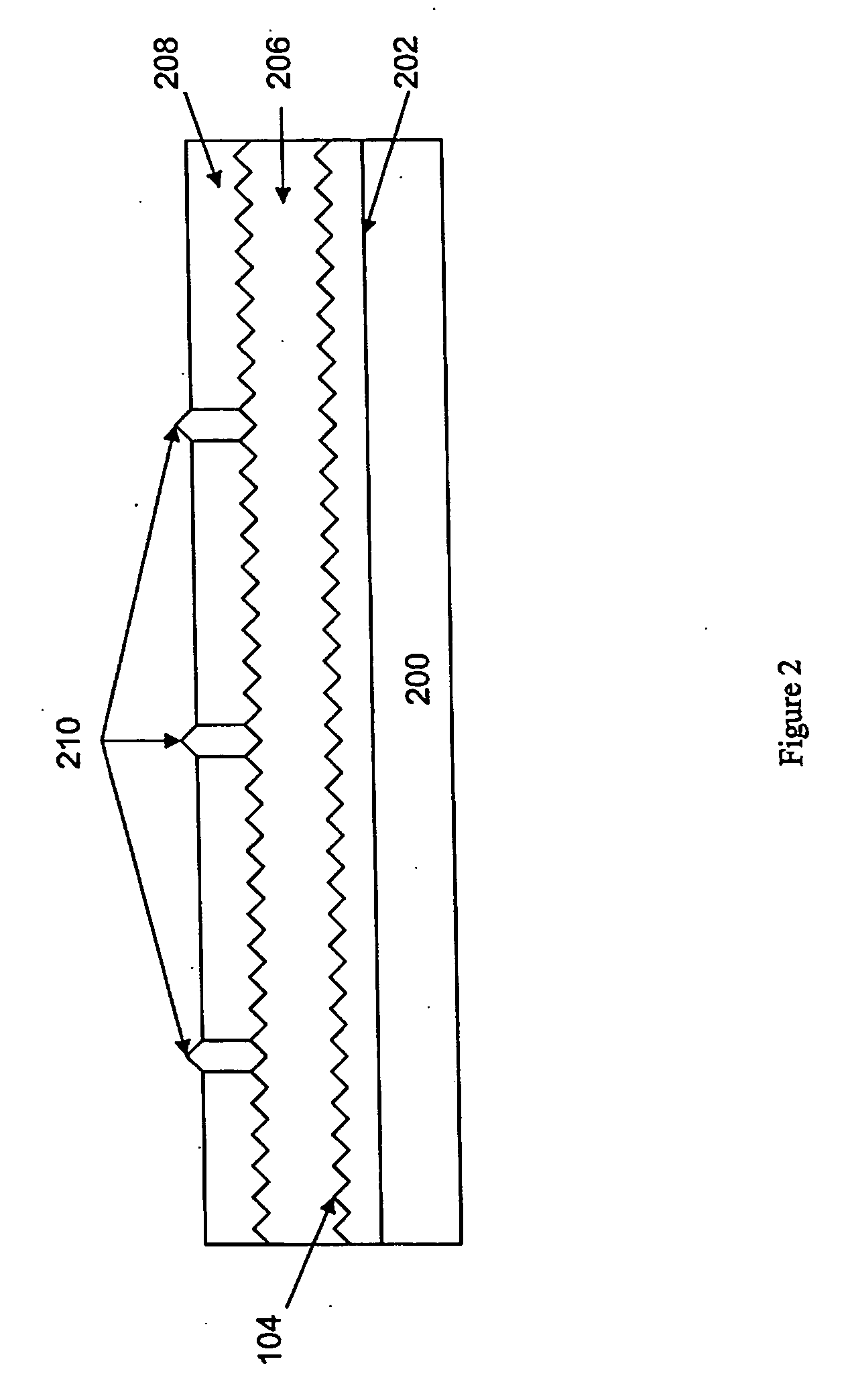Reactive surfaces, substrates and methods of producing same
a technology of substrates and reactive surfaces, applied in the field of reactive surfaces, substrates and methods of producing same, can solve the problems of monumental failures and center of monumental discoveries
- Summary
- Abstract
- Description
- Claims
- Application Information
AI Technical Summary
Problems solved by technology
Method used
Image
Examples
example 1
Silane-PEG20-Biotin / Avidin Surface
[0087] A trimethoxysilane PEG20-biotin molecule was synthesized by BioLink Life Sciences (Cary, N.C.), where the “20” refers to the number of repeating ethlylene glycol units. The precursor reagents are commercially available.
[0088] The PEG20-biotin surface was fabricated by incubating substrates in lug PEG20-biotin per g of solvent for four hours. The solvent consisted in Methanol, 1% water by weight, and 0.1% Tween 20 non-ionic surfactant. The thickness of the PEG20-biotin coat was t=1.1 nm as measured by ellipsometry, and the water contact angle (measured within 5 seconds of drop deposition) was θ=35 degrees.
[0089] The PEG20-biotin forms a thin coating on fused silica slides and Si substrates containing a native oxide (ca 2 nm) from dilute methanol solutions (ca 1 mg PEG20-Biotin in 1 g of methanol), where the thickness varies depending upon solvent composition, and incubation time at room temperature. It was observed that when the thickness o...
example 2
Silane-PEG24-Biotin / Avidin Surface
[0097]α-biotinyl-ω-trimethoxysilyl terminated poly(ethylene glycol) (24 units) (PEG24-biotin) was synthesized by Polymer Source (Dorval, Montreal Canada).
[0098] A solution was prepared by dissolving PEG24-biotin in Ethanol at a concentration of 0.6 mg PEG24-Biotin per gram of solvent. A small amount of methanol (ca 0.4% by weight) was added to the mix to adjust the rate of deposition of the silane reagent to a Si chip (with a native oxide of ca 2 nm) between 1 nm and 1.5 nm (by ellipsometry) in three to five hours.
[0099] Fused Silica and Si substrates modified with PEG24-biotin again demonstrated low levels of non-specific interaction when challenged with fluorescently-labeled φ-29 polymerase as well as biotin-blocked Neutravidin, while at the same time showing high levels of (specific) binding towards Neutravidin and streptavidin. Restated, the surfaces of the invention have demonstrated a high level of specific interaction with desired groups, ...
example 3
Adjusting Density of Reactive Groups
[0100] A system was prepared to test the ability to adjust the surface density of reactive functional groups using a dilution protocol. In particular, PEG24-biotin surfaces were prepared using varying dilutions of the PEG24-Biotin in a solution of N-(3-triethoxysilylpropyl)gluconamide (TES-G) is a commercial reagent (Gelest Inc, Morrisville, Pa. product #SIT8189-0).
[0101] A TES-G stock solution was prepared by dilution of 2 mg of reagent per g of a solvent mix of ethanol and 0.4% methanol. A PEG24-biotin stock solution was prepared at the concentration of 1.5 mg per gram of solvent (ethanol / methanol mix). Five aliquots of 10 mL each were prepared, and increasing amounts of PEG24-biotin stock were added to each aliquot: 0, 40 μL (0.3%), 80 μL (0.6%), 200 μL (1.4%), 400 μL (2.7%) and 800 μL (5.4%). Fused silica blanks and Si wafers were incubated simultaneously in the five aliquots for 15 h. Afterwards the substrates were removed from the reaction...
PUM
| Property | Measurement | Unit |
|---|---|---|
| area | aaaaa | aaaaa |
| ionic strength | aaaaa | aaaaa |
| ionic strength | aaaaa | aaaaa |
Abstract
Description
Claims
Application Information
 Login to View More
Login to View More - R&D
- Intellectual Property
- Life Sciences
- Materials
- Tech Scout
- Unparalleled Data Quality
- Higher Quality Content
- 60% Fewer Hallucinations
Browse by: Latest US Patents, China's latest patents, Technical Efficacy Thesaurus, Application Domain, Technology Topic, Popular Technical Reports.
© 2025 PatSnap. All rights reserved.Legal|Privacy policy|Modern Slavery Act Transparency Statement|Sitemap|About US| Contact US: help@patsnap.com



